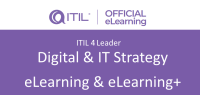Exam Glossary
| Term | Main definition |
|---|---|
| IT asset management practice | The practice of planning and managing the full lifecycle of all IT assets. |
| IT asset | Any valuable component that can contribute to the delivery of an IT product or service. |
| Internet of Things | The interconnection of devices via the internet that were not traditionally thought of as IT assets, but now include embedded computing, capability, and network connectivity. |
| internal customer | A customer who works for the same organization as the service provider. |
| intelligent disobedience | Deliberately disobeying or disregarding rules in order to avoid a dangerous situation, or ‘doing the right thing’. |
| integrity | A security objective that ensures information is only modified by authorized personnel and activities. |
| integration of duties | Having a task that is prone to fraud or error performed by one person because other controls have been applied. |
| innovation risks | Risks introduced by the organization’s innovations. |
| innovation | The adoption of a novel technology or way of working that has led to the significant improvement of an organization, product, or service. |
| infrastructure and platform management practice | The practice of overseeing the infrastructure and platforms used by an organization. This enables the monitoring of technology solutions available, including solutions from third parties. |
| information technology | The application of digital technology to store, retrieve, transmit, and manipulate data (data processing), often in the context of a business or other kind of organization. |
| information security policy | The policy that governs an organization’s approach to information security management. |
| information security management practice | The practice of protecting an organization by understanding and managing risks to the confidentiality, integrity, and availability of information. |
| information model | The construct of information, related to the taxonomy and relationships of data to other data, required to present and share content in a meaningful and representative way. |
| information and technology | One of the four dimensions of service management. It includes the information and knowledge used to deliver services, and the information and technologies used to manage all aspects of the service value system. |







